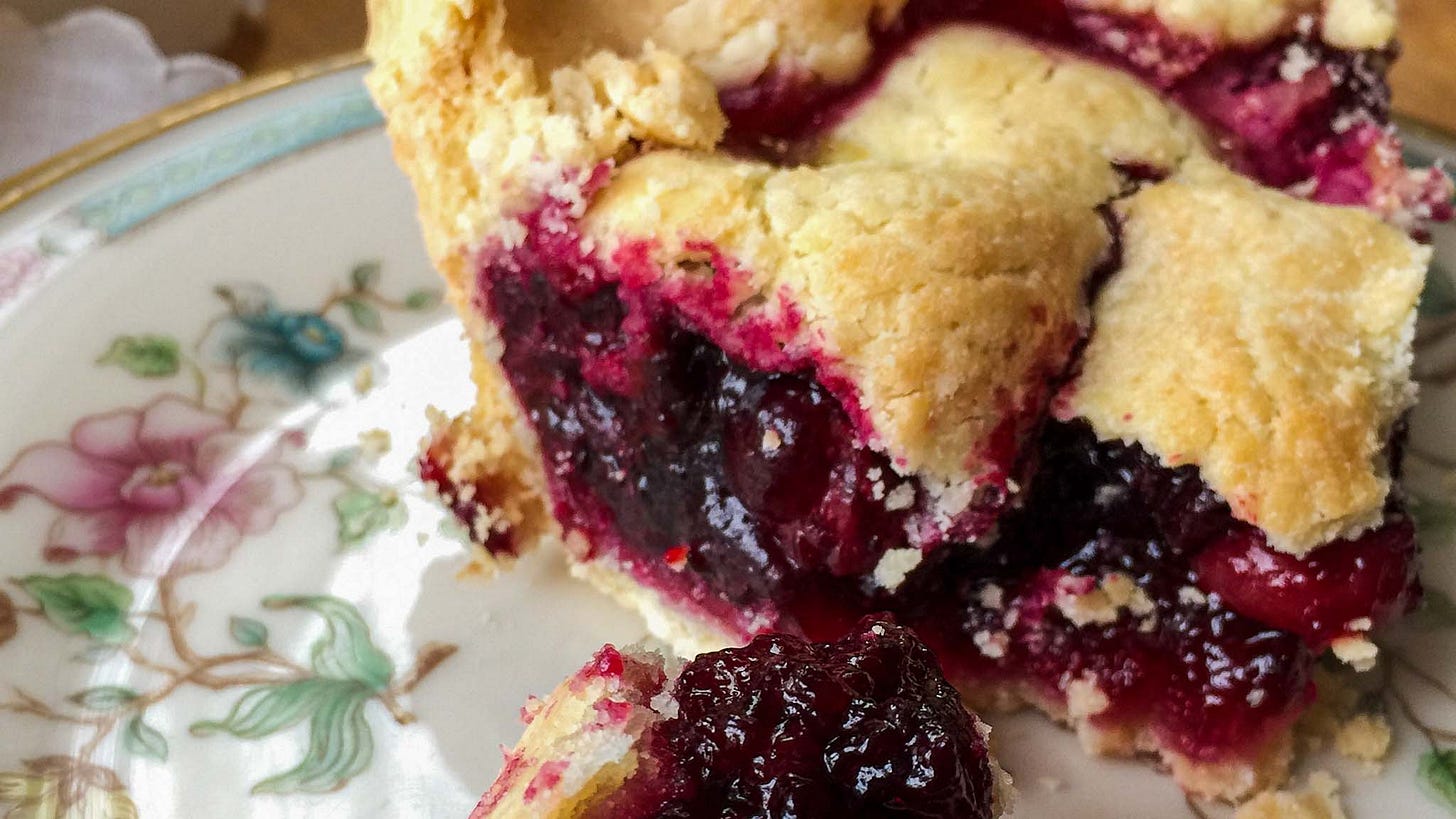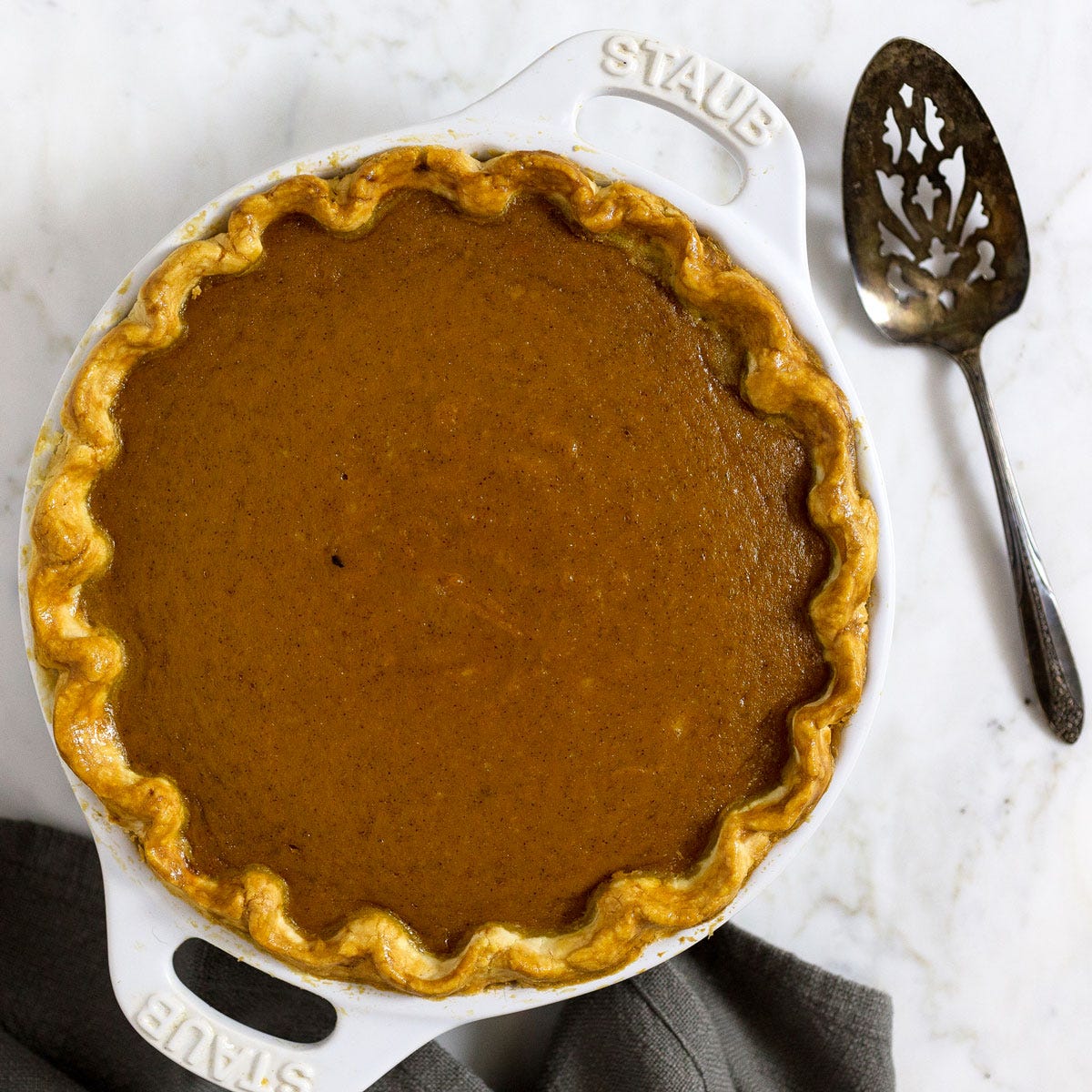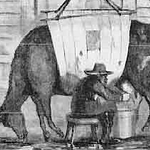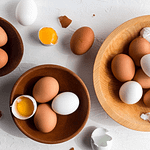In honor of Thanksgiving, we talk pie, from Harry Potter's favorite tart to recipes in American Cookery by Amelia Simmons, an American orphan. Kim shares another one of her macabre food facts and Leigh waxes poetic about her favorite Thanksgiving pie. Well, maybe not poetic, but she does share some interesting melon facts.
Pumpkin Pie and Treacle Tarts
The end of October kicks off the festive holiday season. And pie is the best part of any kind of holiday meal. To honor this season, we talk pie, starting with our favorites.
Like Harry Potter, we’re fans of Treacle Tart. So, it only makes sense that we dig deeper into its history. Along the way, you are sure to enjoy Kim’s macabre food facts.
If you’re not familiar with treacle it’s basically just golden syrup and molasses. It's a byproduct of the sugar refining process. If you want to know more about how treacle is made, we have included a link in the references to help you out. Evidently, what we know of treacle is not what it used to be in the past. In ancient times its less refined form was just used as a medicine and antidote for poison.
Do you know treacle is also part of Mahogany? Its recipe includes two parts of gin to one part of treacle. Traditionally, Canadian lumberjacks and Cornish fishermen consumed this dark drink to give themselves an energy boost.
One constituent of Treacle is Golden Syrup. The same Golden Syrup you can use to cookie dish Crunchies. No, you cannot substitute corn syrup for golden syrup. Both are totally different things. Golden Syrup has an interesting history of its own. It was initially sold off as pig feed as nobody knew what else to do with it. Unfortunately, it didn’t spread as much here in the US and North America. Perhaps one reason was maple syrup – an alternative – was too easy to come by. The current Golden syrup recipe came much later thanks to Charles Eastwick, a notable British Chemist.
Here’s another fun fact: Lyle's Golden Syrup's label references a story from the Bible. Abram Lyle, who created Lyle's Golden Syrup, was a religious man. So he took inspiration from the Bible to create the crazy logo of a rotting lion and the bees. Here's the story:
"The Bible tells of how strongman Samson killed a lion with his bare hands. The Book of Judges details how when the famously long-haired figure returned to the carcass a few days later, he found a swarm of bees had created a hive in the lion's dead body. In the story, Samson then took honey from the hive and fed it to his parents without telling them where he got the honey from. "
Enough on treacle, let's get back to Treacle tart. treacle tart is a famous British recipe. It dates back to before golden syrup was commercialized. Perhaps the reason it got so popular was that it required no fancy fruits, ingredients, or spices. All the ingredients were readily available and quite affordable as well. It’s also a predecessor to Shoofly Pie – the longtime staple in Pennsylvania Dutch cooking. More on that in a future episode!
No talk of pie can be complete without Pumpkin Pie. Therefore, at the end of the podcast, we discuss this fall dessert. While sharing some interesting melon facts, Leigh explains the etymology of the word "Pumpkin" and its history. Again, it's not surprising that the pumpkin pie we celebrate Thanksgiving with is not the same pumpkin pie our ancestors celebrated with. Obviously, they didn't have an oven to bake a pie. So, It has gone through several transformations of its own. To give you some idea, we talk about some interesting Pumpkin Pie recipes from old-books-with-interesting-names. We also discuss Abraham Lincoln’s desire to impose this Yankee tradition on the American people.
The first published American cookbook, titled American Cookery by Amelia Simmons, published in the early 1800s, has an interesting take on Pumpkin Pie. It's much more similar to what we know of the Pumpkin pie today. We are sure to try it this Thanksgiving and without any guilt. Despite what people believe, Pumpkin Pie is a nutrient-rich desert. In fact, One slice of Pumpkin Pie has more Vitamin A than your daily intake requirement. It's also rich in Vitamin C, Potassium, and Iron.
Knowing the history of the food makes us appreciate it all the more. What we eat today comes from a rich tradition of cuisine established over the years. So, next time you have a slice of treacle tart, don’t forget to show your appreciation for all the people who help bring it to our tables.
What is your favorite pie? Tell us your story. We would love to hear from you!
Pie Transcript
🎧 Click here for the full, interactive transcript of this episode 🎧
Sources We Found Helpful for this Episode
Books We Think You’ll Enjoy Reading
Art of the Pie by Kate McDermott
The Lost Art of Pie Making Made Easy by Barbara Swell
The Pie and Pastry Bible by Rose Levy Beranbaum
Recipes You Really Need to Try
Episodes we think you’ll like
We would love to connect with you
AsWeEat.com, on Instagram @asweeat, join our new As We Eat community on Facebook, or subscribe to the As We Eat Journal.
Do you have a great idea 💡 for a show topic, a recipe 🥘 that you want to share, or just say “hi”👋🏻? Send us an email at connect@asweeat.com
Review As We Eat on Podchaser or Apple Podcast. We would like to know what you think.
And please subscribe to As We Eat, Going Places. Eric and Leigh will be traveling in their converted van sharing stories of food culture from the road.
If you enjoy the podcast consider becoming a paid subscriber to the As We Eat Journal. For just a few dollars, you can get access to this exclusive content as well as more in-depth articles and help keep our oven lights on!
Thank you for listening to the As We Eat Podcast. This post is public so share it with a friend - or three :)



























Share this post